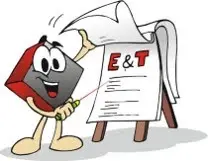The TPM and the 4th Generation
The strategy focused on the efficiency of the equipment or line (1st generation), observing OEE or OPE, is no longer sufficient; therefore, we have a more operation-oriented approach and everything that surrounds or directly feeds it: raw materials, processes, projects, tools, etc...
Generation after 1999
In the year 1999, even in the face of the forecast that the Japanese economy would have come out of the bottom of the pit with the reversal of the growth index, albeit slightly into the positive...
The Evolution of TPM
The evolution of TPM from generation to generation has been very significant. Over the years, TPM has increasingly adapted to the needs of companies, generating outstanding results in their activities...
The importance of the Education and Training pillar in the TPM methodology
The current scenario of significant changes in organizations strengthens the need for them to continuously develop their human resources and ensure that all employees reach their potential...
The importance of Visual Controls in equipment
The visual control allows you to see clearly if something is normal or abnormal. This is important to simplify inspection and ensure that the work is done accurately...
Are anomaly tags important for Autonomous Maintenance?
Although the anomaly labels seem to us like retro things that could be replaced by notes in the system, they still play an important role in TPM...
Come and learn a little more about the history of PMS in our posts on the LP Blog!
We are in the fourth generation of a methodology that has positioned itself as a Management Method for large organizations. It operates in a critical manner, with a cost tree, asset criticality, loss criticality, therefore it has a strategy linked to that of the organization and is measured...







